Pike's Peak Ascent - how an unprepared man survived a mountain race
Sadly, tech didn't help me here.
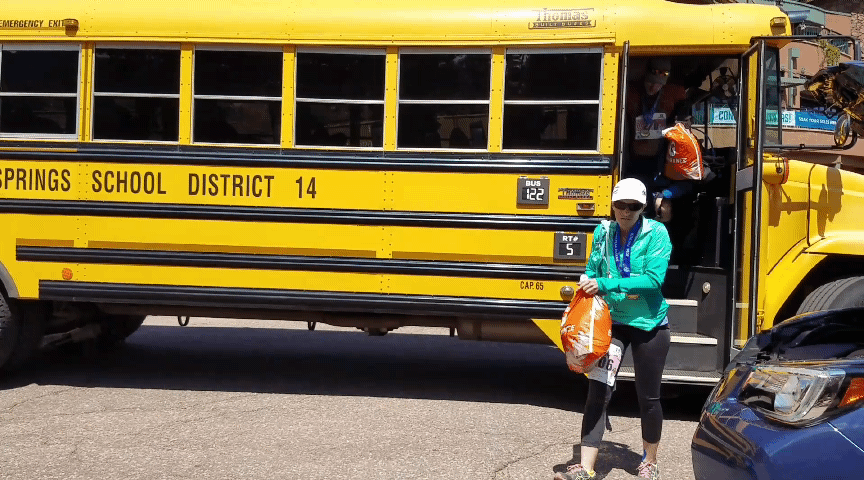
I survived - but I made a massive mistake.
My plan was to take on one of the hardest half marathons in the US, the Pike's Peak Ascent - read my petrified preview here - and use all that the world of tech had to offer to help me make it up there.
What I didn't realise was that equipment would be useless. the Ascent being not about running but simply continuing to exist while trying to get up a mountain that feels impossible to scale.
For those that didn't read last week's piece, let me summarise: the Pike's Peak Ascent is a race that takes place on one of the tallest mountains in the Rockies, where you complete a half marathon distance... up. 2300 meters of elevation gain, with the slowest times clocking in at six and a half hours.
I arrived in Colorado Springs a couple of days before the event, a town well above sea level, so oxygen was already getting sparse. I'd signed up for this and then failed thoroughly to prepare for the lack of air I was going to face a few thousand meters towards the sky - I was what's called a 'flatlander' and I didn't have the mountain experience most of the field did.
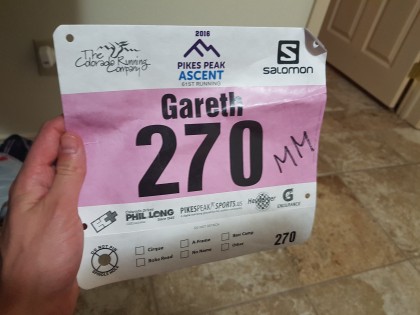
So here I was: untrained for a powerfully hard race, and really rather panicking about the prospect of collapsing without the oxygen I've become so fond of.
Cue the day of the race, and apart from a lucky rescue from an Uber driver when my pre-booked taxi didn't turn up (GO TECH!) I was at the start line, wondering if I've brought too much stuff.
Get daily insight, inspiration and deals in your inbox
Sign up for breaking news, reviews, opinion, top tech deals, and more.
I love a good conga
I'd been told the first way to avoid being crippled by the altitude is to hydrate as much as you can, so I was wearing the biggest CamelBak hydration sack I could find with the whole state's water supply sloshing around on my back.
My backpack was also filled with a heavy weather coat, a second pair of gloves and a pair of socks as last minute mittens in case of snow. I was ready.
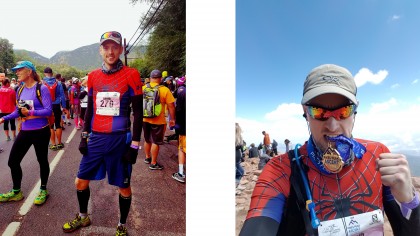
Except that… Most people were in shorts and t-shirt with a water bottle, the sensible ones having a light jacket tied around their waist in case of inclement weather at the top. Whereas I could have probably made back my race fee setting up a camping shop at the side of the road, such was the amount I was carrying.
I had no idea what to expect, how fast I was supposed to go or what time I should aim for. In normal flat races I'm pretty confident in how hard to push, but with absolutely zero experience at a higher altitude (other than the 20 minutes spent at the local altitude chamber messing around on treadmills) I didn't want to go too hard and find I was in all kinds of trouble further up the mountain. My usual precision pace set up on my GPS watch was useless here.
So I jogged the flat start, trying to keep my pace under check, with the plan to walk up the massive hill half a mile in that I'd been warned about in Ascent superstar Matt Carpenter's description of the route.
I knew in the first third I was going to encounter the steepest bits, so I was desperate to keep myself cool and energised for the horror that was going to befall later in the mountain.
Heart in your mouth
The thing was, I was so nervous before the race that I couldn't control my heart rate. Usually I'll warm up and try to keep it above 100bpm as the race starts, leaping around like a festive nobleman before the gun goes off.
This time I couldn't even get it below that threshold standing still and breathing deeply - and it spiked heavily as I began to run. 168bpm... I'd never be able to sustain that for up to six hours. I felt fine though (certainly not exerted) so figured the Wahoo Tickr X heart rate monitor I was using didn't have the right contact and was shooting out the wrong results.
I adjusted it. It wasn't. I was in trouble within the first five minutes.
I tried to bring my heart rate down but nothing worked. Up the first steep hill (a place called Hydro Street) and I was struggling, already walking.
Fear was creeping into every pore, but I kept telling myself that this first third was the steepest part, and getting to the top of the 'W's' (a never-ending set of switchbacks) would see me get back onto some sort of running pace. I couldn't even plug in some Bluetooth headphones with calming music, as they were prohibited.
Spoiler alert: I walked for most of this race. Initially that was because the trails were so narrow that I couldn't pass anyone, taking part in the most anxious conga line of my life. (And that's terrible. I love a good conga).
I felt a bit light-headed. My head flickered with pain.
I'd studied this course over and over again in the buildup, reading the aforementioned description and comparing it to a Google Earth diagram on my iPad.
Apart from knowing that the first bit is steep and it's dumb to push hard on that, I might as well have spent the research time learning the entire script to the Sound of Music, for all the good that reading did me up there.
The W's ended at some point, but I don't know where. According to the guide there were signs and creeks and apparently long and luxurious downhills that were supposed to come, marked by rocks with certain branches coming out of them... It all blurred into one.
Panic at the stations
The whole time I was marching up this mountain, desperately trying to keep a rhythm and not think about how many hours of this torture lay ahead, I was on red alert for signs of acute mountain sickness (AMS).
And about a third of the way up, I felt a bit light-headed. My head flickered with pain. I didn't want to eat any of the food I'd brought to keep me sustained, and every time I tried to close my fist, it felt tight and swollen - all classic symptoms of AMS.
I didn't know what to do. Should I turn back? Was I heading into trouble? I suddenly found myself with another tech conflict: I'd brought the Samsung Galaxy Note 7 with me, and had been using it to monitor the amount of oxygen in my blood when I arrived in the town below a few days earlier to see how the altitude change affected me.
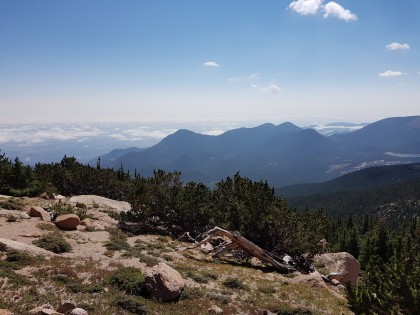
My idea was to keep using it during the race, to make sure I wasn't losing too much oxygen. However, I suddenly found myself unwilling to know the number - and my fingers were so cold that I wasn't sure I could trust the results anyway. This was meant to be my technological secret weapon, and suddenly I couldn't face knowing that my oxygen levels were low. Panic rising.
It was at that point one of the elite runners came running back down past me, clearly having had an injury issue and pulling out of the race. I suddenly relaxed - if I needed it, the exit was right behind me. But I figured as long as I was able to keep putting one foot in front of the other,that's what I should do.
And that's pretty much what happened for the next 7 miles, a relentless slog up the hill punctuated only by water stations and a delightful level section as the mountains split apart. I considered trying to break into a jog, but my heart rate was shooting up every time I so much as stepped up on a big rock.
Given I had no plans on hitting a specific time and my pace was already pretty good at around 18 minutes per mile, I decided to just keep locking in the energy and enjoy watching my heart rate, finally, dropping down to the low 100s.
I did run the downhill sections, but mostly just to clear the lactic acid build up from my legs, giving other muscles the chance to fire and briefly give the uphill climbing bits of my limbs a rest.
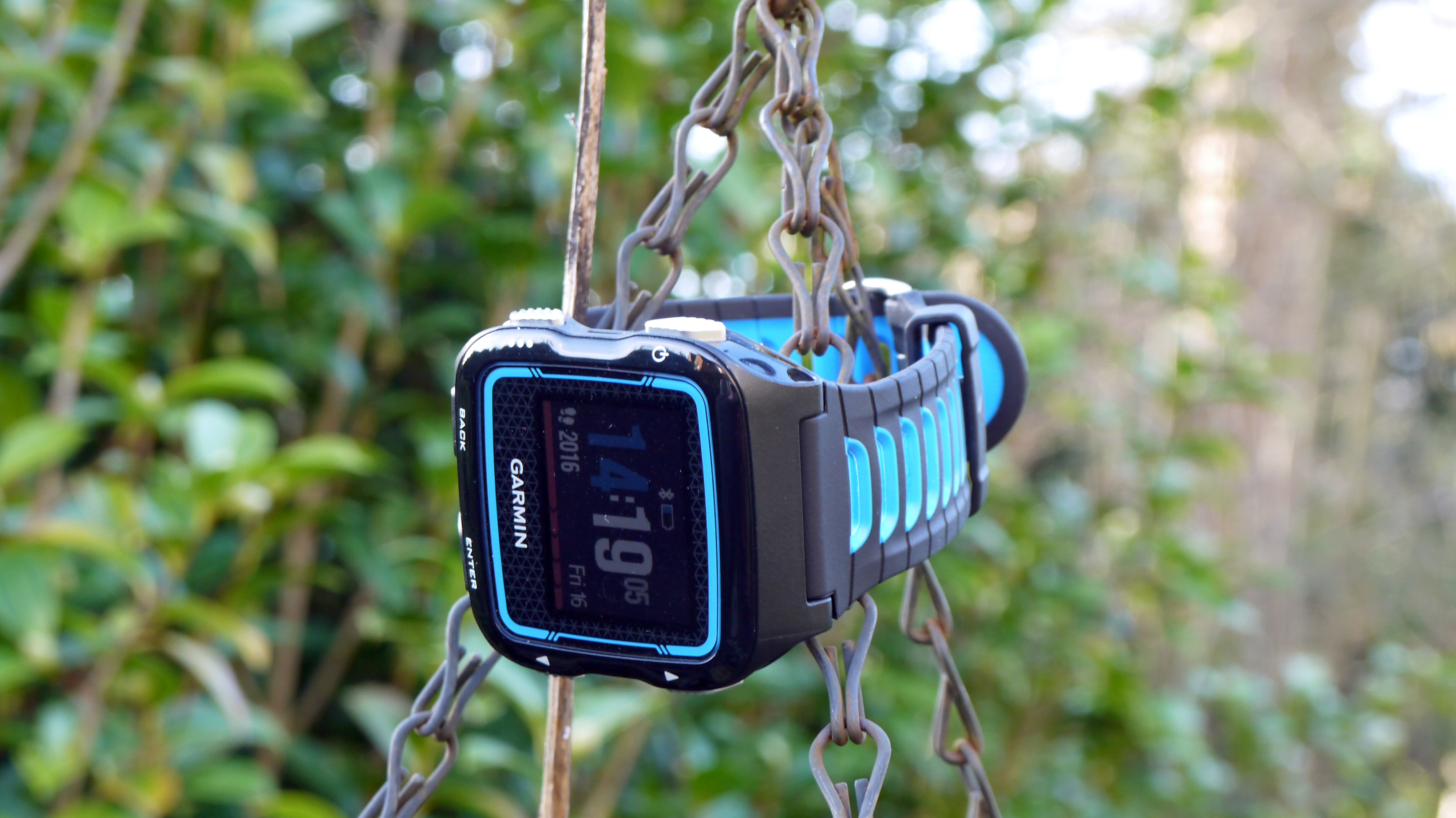
It should be noted at this point that I was so happy I'd brought along the Garmin Forerunner 920XT, as the inbuilt barometric altimeter was giving me a good idea of my ascent in the windless day. The GPS was really starting to struggle to accurately give me a distance report, presumably due to the technical nature of the course, and the tree cover, so I was glad to have some dedicated data to work from.
I was now stumbling along, focusing on picking up my feet and just not stopping
The downside was I kept thinking 'How much higher do I have to climb?' every time I looked down at it, using my swollen fingers to flick through the numbers. My heart rate had finally settled at around 150bpm at the midway point, and would steadily descend as my pace did for the rest of the race.
I'd constantly been told that the race would 'properly' start when the trees - unable to get enough oxygen to exist - disappeared and I entered a desolate, rocky desert. Eventually, that moment appeared after three and a bit hours of climbing, and I could see the summit at this point, three miles of distance left to cover... And it looked SO FAR AWAY.
The trees were thinning out quite a bit as the summit crawled into sight. I was wearing a cap to keep the sun off, and as a result couldn't see what was above me, instead focusing on the calves of the person in front and monitoring for things I would trip over.
This meant I had a period of five minutes where I kept getting hit in the head by Christmas trees, the firs being the foliage of choice at this 3700 meter line. That was something different.
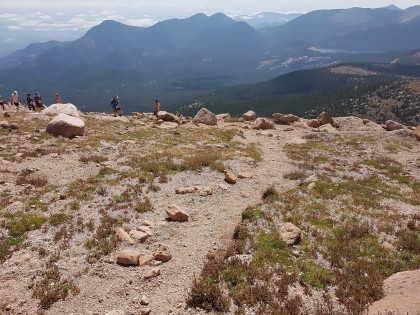
It's hard to describe the last portion of the Ascent, as it just mushed into one single thought: 'please, let me finish this'. The ground became loose gravel that gave away with every step, asking more of screaming muscles. On top of that, every five steps there was another large rock to scramble up (or so it felt), robbing me of vital energy.
I was now stumbling along, focusing on picking up my feet and just not stopping, knowing I might not be able to start again if I did. The ascent became steeper and steeper, and the line of people snaking along meters above me seemed never ending, every victorious turn of a corner yielding a greater challenge.
After 73 years of walking, I finally got to the '16 Golden Stairs', which are anything but. They're a series of switchback corners that involve mostly climbing up massive rocks and wondering how sweet the end would be you just hurled yourself sideways.
The end was well within earshot by now, but the 10 minutes it took to get there felt like a lifetime. I eventually crossed the line, my legs shooting with adrenaline at the realisation it was all over. It was done.
Tech to tell me I'm tired
After winding my way back down to the base of the mountain and into the sweet, sweet oxygen, I pulled out my last bit of technology - the Omegawave system.

This gadget monitors your vital signs in a more advanced way, telling me if I'm tired and I've been using it to see if my terrible diet and jetlagged lack of sleep was going to ruin my chances in the Ascent.
It's a cool setup, distilled from 'proper' athlete sports science. You put a standard chest strap on, but plug in a wire that attaches to two electrode pads you place on your forehead and palm. A connection to an iPad or phone will provide you with the interface you'll need.
After measuring for four minutes, lying still and looking like an extra in an '80s sci-fi movie, the Omegawave system will give you a complete view of your recovery state, telling you all kinds of impenetrable science terms but assigning a traffic light system to them (green good, red bad).
The upshot is it'll not only be able to tell how recovered you, but also for what activity. This means you might be able to go endurance running but not lift weights. Or perhaps focus on sharp speed work but not be able to do anything that requires intense skill and coordination.
The mixture of electrodes and deep-dive information made me feel like I was taking my first steps into excellent information about my body and recovery levels.
Even your target heart rate zones alter with each measurement, and if combined with the Adaptive Training Plans Omegawave offers, you'll theoretically get personal training with insight like nothing else.
Except: the results were too good. I'm certain that before the run, after I'd run a variety of sleep-deprived training sessions in intense heat I shouldn't be barely fatiguing, but all my results came back right in the green zones.
I tested it again after the Pikes Peak Ascent, where I'd spent the best part of five hours trekking up a mountain without much oxygen and burning 3000 calories, to see how messed up I was.
Apparently I was in the best shape yet - all windows green and theoretically meaning I could go out and push it hard in a speed session.
I was really disappointed - I wanted the system to almost flash and say 'Oh man, what have you done?' such would be the level of tiredness I'd forced upon myself.
I'm definitely not fit enough to have been ready to go again that soon after, so I'll be chatting to the Omegawave guys and digging into that one. In fact, only one session (when I was jetlagged and shattered) has delivered results that are less than perfect - and even then I was told that I could still go out for an endurance run.
But who cares about that? Who cares about what did and didn't work... All that matters is that it's all over, I beat the Pike's Peak Ascent and - crucially - I didn't die.
- Gareth Beavis is TechRadar's Running Man of Tech, testing the latest in fitness technology in a never-ending quest to run further and faster and bringing you the results right here.
- If you want to say hi, he's @superbeav on Twitter
- You can see his stumblings on Strava
- And for more data, follow him on Smashrun
- And if you want to get the full lowdown on the latest and greatest running tech, read the rest of the Running Man of Tech story here

Gareth has been part of the consumer technology world in a career spanning three decades. He started life as a staff writer on the fledgling TechRadar, and has grew with the site (primarily as phones, tablets and wearables editor) until becoming Global Editor in Chief in 2018. Gareth has written over 4,000 articles for TechRadar, has contributed expert insight to a number of other publications, chaired panels on zeitgeist technologies, presented at the Gadget Show Live as well as representing the brand on TV and radio for multiple channels including Sky, BBC, ITV and Al-Jazeera. Passionate about fitness, he can bore anyone rigid about stress management, sleep tracking, heart rate variance as well as bemoaning something about the latest iPhone, Galaxy or OLED TV.